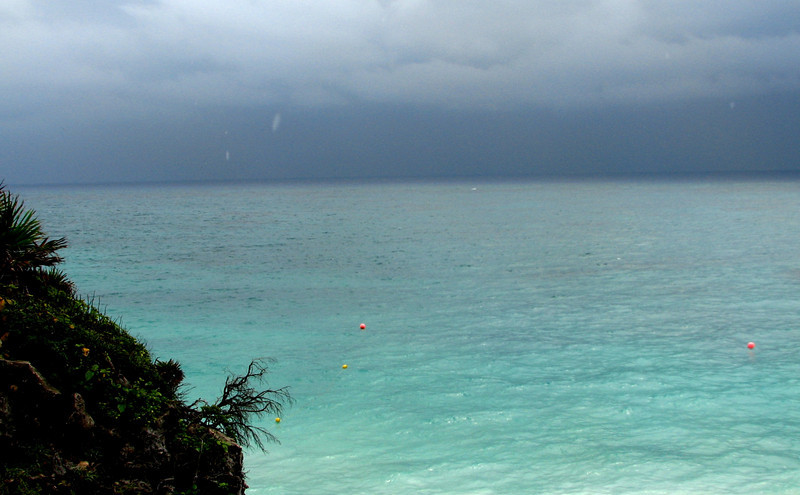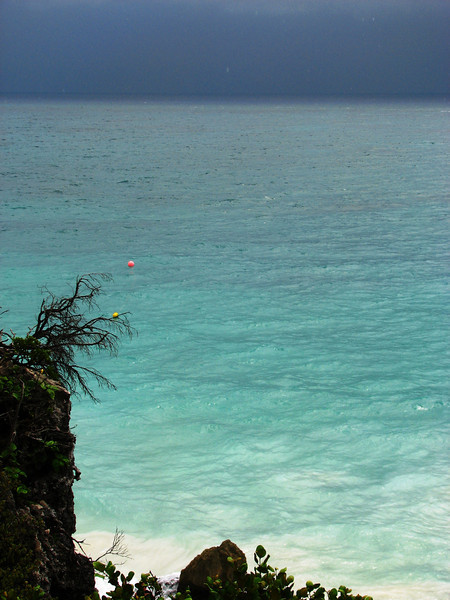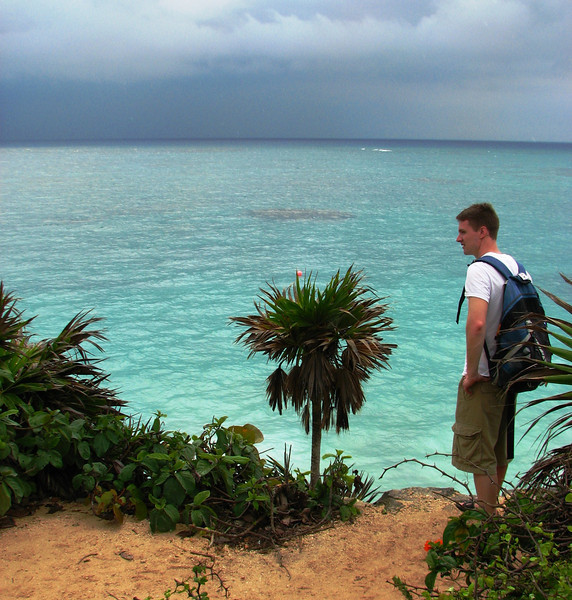...
I'm guessing these are tiny bits of salt rime on the sensor.
Any dirt or crud on a digital sensor that I have experienced (plenty, by the way) has manifested itself in images as a dark spot, rather than a light spot. Same applies to any junk that has landed on internal surfaces in my lenses. So I am inclined to discount the salt rime on the sensor possibility here.
The white streaks puzzle me for that reason.
Usually, I would associate light toned streaks like this with some kind of precipitation -- perhaps rain, snow, ash -- and a slowish shutter speed. They do not look to me like the products of flare from something on the lens surface. The appearance of the one streak well up in the clouds (upper right) leads me to think these are not some details in landforms, such as slide areas.
Getting back to junk on the digital sensor:
I very often shoot at larger apertures (f/2.8 - f/5.6) and note the crud spots on images tend to be fairly well defined (not crisply so, but have discernable if "fuzzy" edges). They are most evident as darker (gray) smudges in large monochrome image areas that do not have significant texture or image detail -- skies, etc..
One thing that crud on the sensor does do, is pretty much leave its image in the same relative position from frame (picture) to frame. You might check other images closely for the appearance of these spots in the same general places, and shapes, sizes, etc.. That would tend to indicate they may be from junk on the sensor.
If you shot more than one frame of this scene, do the white streaks appear in all the images? If so, at the same spots? That's where to start your trouble shooting analysis, in my opinion.
G.





